A line equation of the form ax+by+c==0 can be constructed from 2 points. For a given point to be inside a convex shape, we need testing whether it lies on the same side of every line defined by the shape's edges.
In pure Python code, taking care of writing the equations avoiding divisions, this could be as follows:
def is_on_right_side(x, y, xy0, xy1):
x0, y0 = xy0
x1, y1 = xy1
a = float(y1 - y0)
b = float(x0 - x1)
c = - a*x0 - b*y0
return a*x + b*y + c >= 0
def test_point(x, y, vertices):
num_vert = len(vertices)
is_right = [is_on_right_side(x, y, vertices[i], vertices[(i + 1) % num_vert]) for i in range(num_vert)]
all_left = not any(is_right)
all_right = all(is_right)
return all_left or all_right
vertices = [(670273, 4879507), (677241, 4859302), (670388, 4856938), (663420, 4877144)]
The following plot tests the code visually for several shapes. Note that for shapes with horizontal and vertical lines usual line equations could provoke division by zero.
import matplotlib.pyplot as plt
import numpy as np
vertices1 = [(670273, 4879507), (677241, 4859302), (670388, 4856938), (663420, 4877144)]
vertices2 = [(680000, 4872000), (680000, 4879000), (690000, 4879000), (690000, 4872000)]
vertices3 = [(655000, 4857000), (655000, 4875000), (665000, 4857000)]
k = np.arange(6)
r = 8000
vertices4 = np.vstack([690000 + r * np.cos(k * 2 * np.pi / 6), 4863000 + r * np.sin(k * 2 * np.pi / 6)]).T
all_shapes = [vertices1, vertices2, vertices3, vertices4]
for vertices in all_shapes:
plt.plot([x for x, y in vertices] + [vertices[0][0]], [y for x, y in vertices] + [vertices[0][1]], 'g-', lw=3)
for x, y in zip(np.random.randint(650000, 700000, 1000), np.random.randint(4855000, 4880000, 1000)):
color = 'turquoise'
for vertices in all_shapes:
if test_point(x, y, vertices):
color = 'tomato'
plt.plot(x, y, '.', color=color)
plt.gca().set_aspect('equal')
plt.show()

PS: In case you are running a 32-bit version of numpy, with this size of integers it might be necessary to convert the values to float to avoid overflow.
If this calculation needs to happen very often, the a,b,c values can be precalculated and stored. If the direction of the edges is known, only one of all_left or all_right is needed.
When the shape is fixed, a text version of the function can be generated:
def generate_test_function(vertices, is_clockwise=True, function_name='test_function'):
ext_vert = list(vertices) + [vertices[0]]
unequality_sign = '>=' if is_clockwise else '<='
print(f'def {function_name}(x, y):')
parts = []
for (x0, y0), (x1, y1) in zip(ext_vert[:-1], ext_vert[1:]):
a = float(y1 - y0)
b = float(x0 - x1)
c = a * x0 + b * y0
parts.append(f'({a}*x + {b}*y {unequality_sign} {c})')
print(' return', ' and '.join(parts))
vertices = [(670273, 4879507), (677241, 4859302), (670388, 4856938), (663420, 4877144)]
generate_test_function(vertices)
This would generate a function as:
def test_function(x, y):
return (-20205.0*x + -6968.0*y >= -47543270741.0) and (-2364.0*x + 6853.0*y >= 31699798882.0) and (20206.0*x + 6968.0*y >= 47389003912.0) and (2363.0*x + -6853.0*y >= -31855406372.0)
This function then can be copy-pasted and optimized by the Jython compiler. Note that the shape doesn't need to be rectangular. Any convex shape will do, allowing to use a tighter box.

